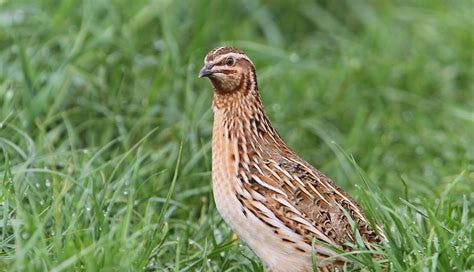Week 35: An Ode to Quails in A Beethoven Sonata
One pianist's journey to perform the 32 piano sonatas of Beethoven.
If you have Twitter, here’s a chirpy post that’s perfect to retweet!
Beethoven’s Sonata No. 18, Opus 31 No. 3, is all about quails. Yes. Nobody knows this.
And yet it is indisputable. You read it here first!
We’re talking about the Common Quail, the almost insufferably adorable Coturnix coturnix, a seemingly shy, small bird who runs about on the ground and nests like a local chicken, but then picks up and makes intercontinental flights from Northern Europe to sub-Saharan Africa.
Beethoven loved quails. He spent hours listening to them in their habitat, around the village of Heiligenstadt where he went to compose in summer. Many classical music fans have heard the place in his “Pastoral” Symphony No. 6, where he puts in the calls of a quail, bracketed by those of a nightingale and cuckoo. Here’s the spot in the music. The quail is the middle bird, going Dum-da Dum:
Got that? Dum – da Dum, Dum – da Dum. Now, please listen up to 1:00 in this recording of the Beethoven sonata in question. If you listen for the full minute, I am sure you will hear the quail motive:
Next: here is an actual quail. In this clip, the quail warms up before singing Dum – da Dum, with a double-note call that gets repeated. Da-DUM. Da-DUM. Da-DUM. The bird also scurries around a lot, gets agitated a lot, and sticks out its neck a lot. Sort of like the character of this sonata. Here you go, and the cuteness factor is real:
I was rushing through the farmer’s market yesterday to get a few staples, when I pulled up hard at a table featuring quail eggs. I’d never noticed this table before. Wow! They are tiny, speckled, and apparently very tasty. I asked the farmer about the sounds that her quails make. She told me that quails will often make that double-note call repeatedly in a crescendo when they are about to lay one of those eggs.
Please take a listen to the first 27 seconds of the Scherzo movement of this Beethoven sonata. I bet you can hear not only the quail’s double-note call, but the egg production too!
I bought two cartons of the eggs. My plan is to make devilled quail eggs for the audience of my house concert this Friday.
This sonata was written during the summer of 1802, when Beethoven was spending time in the countryside around Heiligenstadt. He also made sketches for the Pastoral symphony that summer.
Very soon after he wrote the sonata, he wrote a song about quails. The German word for quail is Wachtel. Here’s the song. If you’re a music nerds who needs more hard evidence that Beethoven’s sonata is also about quails, take note of the piano part at 2:08 in this song.
Compare it to the piano passage at 16:19 in the last movement of the sonata:
I have titled the concert program in which I play this sonata “Divine Comedy.” In last week’s blog, I mentioned how Beethoven’s dialogue in the comedic sonatas I chose for the program is between himself and his concept of the Divine. One might imagine Beethoven lying in the fields or sitting by the brook near Heiligenstadt, struggling with the fact of his impending loss of hearing. Listening deeply to the sounds of Nature around him, finding them immeasurably precious, and within them, seeking meaning, the will to go on.
Samuel Friedrich Sauter’s lyrics for the song depict this type of dialogue:
“Oh! it is ringing out lovingly for me over there;
Fear God!
Fear God!
The quail is calling me, striking my ear!
Sitting in the greenery, covered by blades of grass,
In the shadowy realm it urges the listener:
Love God!
Love God!
He is so gracious, so gentle.
Yet again its bouncing call signifies:
Praise God!
Praise God!
He who is able to do something worthwhile for you.
Can you see the magnificent fruit in the field?
Take it to your heart, inhabitant of the world!
Thank God!
Thank God!
He who nourishes and sustains you.
If the lord of nature terrifies you in bad weather,
Pray to God!
Pray to God!
It calls out, he looks after the meadows.
If the dangers of being a warrior make you afraid,
The quail’s call comforts me again:
Trust God!
Trust God!
Look, he will not be distant for long!”
Perhaps you’ve noticed that the YouTube clips identify this sonata by its popular nickname, “The Hunt”. Nobody seems to know exactly why. It’s possible that it’s been forgotten that it was named for the quail hunt common in Europe at the time. However, personally I’ve never heard this sonata as hunting music. If it is, then Quail, as with the Roadrunner being hunted by Wile E. Coyote, is a comedic trickster who turns the joke onto us humans.



Such a pleasure to read these Heather❤️❤️❤️!
Thanks for writing these posts. I'm an avid follower.
That said, I think you have a typo in the second sentence. You mean sonata 18, not 8. Just FYI.